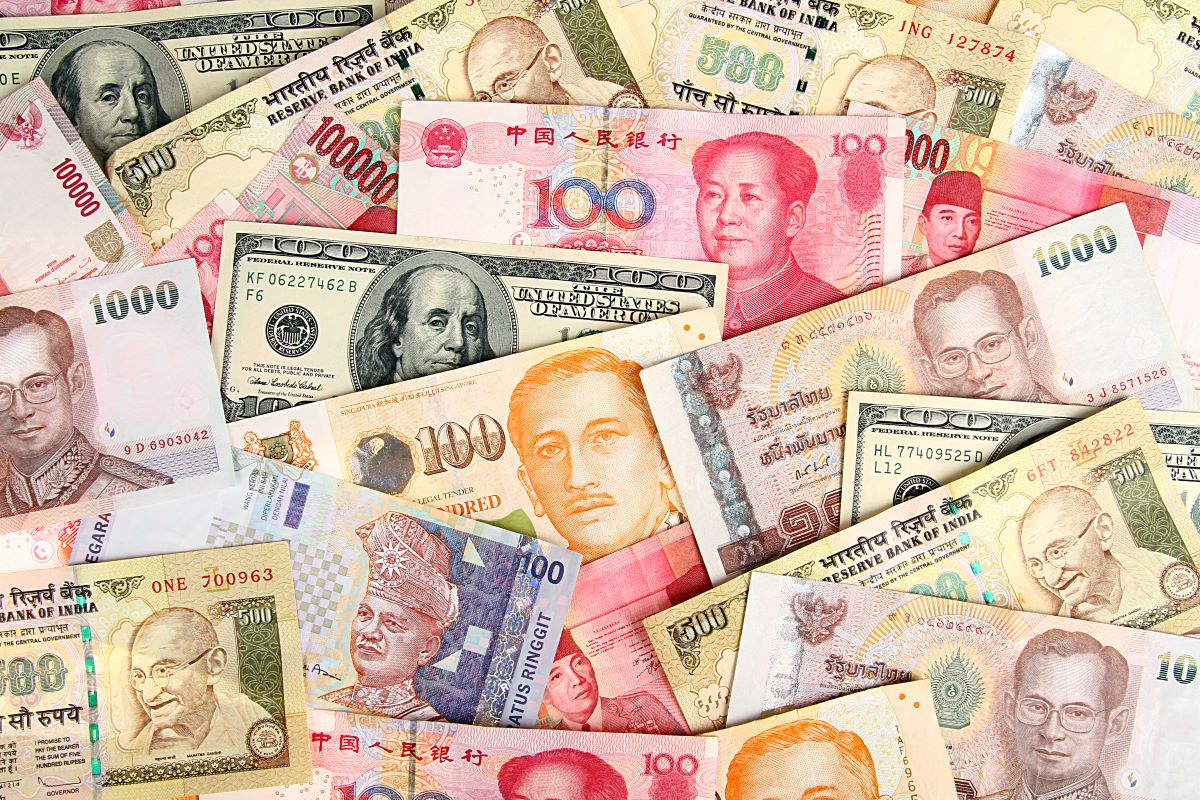The US Federal Reserve’s hawkish stance has rippled through Asian financial markets, leaving central banks in the region scrambling to contain the damage. The US dollar has risen in tandem with interest rates, proving detrimental to Asian currencies which are now languishing.
The US Dollar Index for spot trading DXY has risen more than 18% in the last year, with the majority of its gains in 2022 alone. The Bloomberg JPMorgan Asia Dollar Index (ADXY), a spot index for emerging Asia’s most actively traded currency pairs valued against the US dollar, has declined 8.46% in 2022.
Although Asia is pretty shielded from the global economic slowdown due to its unique position, Asian currencies are at multidecadal lows as the dollar continues to strengthen. The US dollar is on course for its best year since 1984, and investment management firms such as Rabobank, Morgan Stanley and Charles Schwab believe that the dollar may continue to strengthen going forward.
The US dollar is proving to be a bigger threat to Asian economies apart from the domestic headwinds. “We’re not particularly worried about inflation driving policy, but exchange rate weakness, dollar liquidity drying up, those things (are) a bigger issue, (and issues such as) the balance of payments angle,” Taimur Baig, Managing Director at DBS Bank in Singapore, told CNBC during an interview.
Asian currencies and forex reserves
A strengthening dollar is detrimental for Asian economies as imports become expensive. The worst affected are the commodity importing countries in Asia which are seeing heavy selling pressure as sky-high commodity prices due to the war in Ukraine are already a concern.
Currency traders are running for cover as rising US interest rates and fears of a global recession have increased the attractiveness of the US dollar. While central banks in Asia have implemented currency control measures, they have been largely unsuccessful at plugging the slide.
Sri Lanka’s debt defaults and double-digit inflation are stark examples of the impact of a strong dollar on Asian economies. Emerging markets in Asia are running low on stockpiles of the US dollar and other foreign currency, and data from the International Monetary Fund showed that emerging and developing nations’ foreign reserves have shrunk by $379 bn this year through June.
Asian central banks are using dollar reserves to shield themselves from the rallying US dollar and cover the cost of imports. British bank Standard Chartered Plc said that a closely watched measure of reserves cover has fallen to its lowest since the 2008 Global Financial Crisis, with Asian emerging markets except China having enough dollar reserves to fund seven months of imports.
“The deterioration indicates that central bank intervention to support local currencies might be much more limited going forward,” said Divya Devesh, head of ASEAN and South Asia FX research at Standard Chartered in Singapore. The bank adds that India is left with nine months of reserves cover, Indonesia with six months, the Philippines with eight months and South Korea with seven months.
Which are the worst-performing Asian currencies?
The Japanese yen has turned out to be the worst performing Asian currency in 2022, sliding past the key threshold of 144 recently, its weakest level since August 2008. The yen has slipped more than 30% in the past year. However, the Bank of Japan has continued with its ultra-loose monetary policy in anticipation of higher exports and inflation. However, Japan has now indicated that it will intervene to stem the currency slide, for the first time since the 1998 Asian financial crisis.
“We think the yen is undervalued, trading around 25-year lows versus the USD. The weak yen has been supportive for Japan’s competitiveness and has been a boon for the exporters. The primary driver of yen weakness is high US inflation. In Japan however, inflation remains broadly in line with the Bank of Japan’s target; they do not need to hike interest rates,” said Daniel Hurley, Portfolio Specialist at T. Rowe Price.
South Korea’s won has tumbled to 1390.9 against the greenback after a higher-than-expected US inflation stoked worries of aggressive monetary policy tightening of by the US Fed. The won has fallen nearly 20% against the dollar in the past year. The country’s finance minister on September 15 said that they “will take action on FXmarket if needed.”
Japan and South Korea have both resorted to verbal intervention till now without any concrete plans to make moves in the forex market.
India’s rupee recently breached the key level of 80 against the greenback, while the Philippine peso has nosedived to 57.43 against the dollar, both hitting record lows even as central banks in the two countries have sold US dollars to shore up their local currency.
China’s yuan has come under pressure and weakened past the psychologically important level of 7 per US dollar on September 16, the weakest level since July 2020. The yuan has been on a decline like most Asian currencies, but additional fears about the health of the Chinese economy are also weighing on investor sentiment.
“Despite the slowing economy and PBoC’s diverging monetary policy with the US, we expect the Chinese yuan foreign exchange (FX) rate to remain resilient following the “catch-up” depreciation seen in mid-April to mid-May,” said US-based investment firm Western Asset Management Company in a note.
Elsewhere in Asia, Malaysia’s ringgit has fallen 9.09% against the dollar over the past year, the Indonesian rupiah is down 4.94%, the Singapore dollar is slipped 5.08%, the Thai Baht shed 12.52% and the Taiwanese dollar weakened by 13.04%.
“Increased talk of a US and a global recession keeps us bearish overall on Asian currencies,” Geoff Howie, equity and fixed income market strategist at the Singapore Exchange, published on Smartkarma.










 Australia
Australia China
China India
India Indonesia
Indonesia Japan
Japan Malaysia
Malaysia Philippines
Philippines Singapore
Singapore South Korea
South Korea Taiwan
Taiwan Thailand
Thailand Vietnam
Vietnam
 Germany
Germany USA
USA Switzerland
Switzerland Singapore
Singapore
 United Kingdom
United Kingdom








